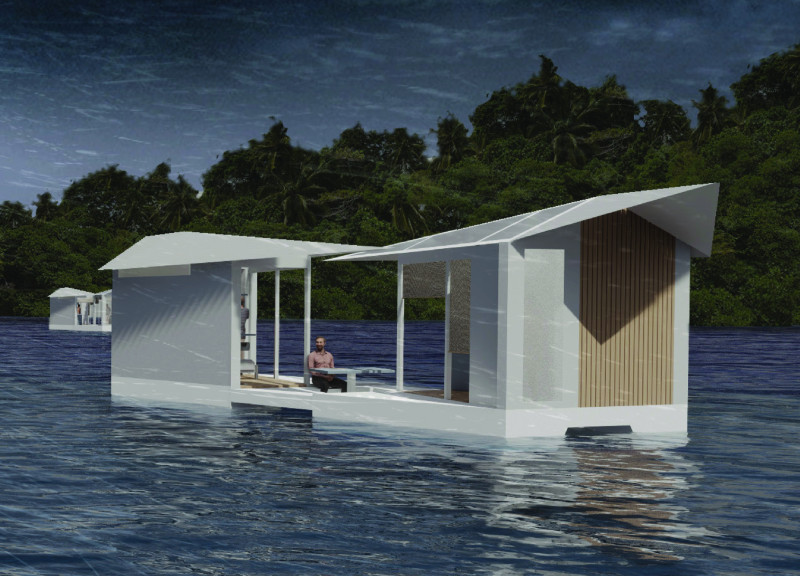5 key facts about this project
"Typhoon 2087" focuses on creating sustainable housing solutions in Ho Chi Minh City, Vietnam, where climate change poses significant risks. As sea levels rise and natural disasters become more frequent, the design addresses the urgent need for flexible living spaces. The concept centers on relocatable off-grid boat housing, enabling residents to adapt to environmental changes while maintaining a connection to their community.
Microhome Design
The design features a microhome made of two trapezoidal prisms. These prisms are arranged to provide distinct functional areas. One module contains essential spaces such as the kitchen and bathroom, making them readily accessible. The other module offers a flexible living space that can be reconfigured as needed. An adjustable blind system gives residents control over privacy, creating a comfortable environment that can adapt to various situations.
Sustainability Features
Sustainable living is a key aspect of the design. The microhome incorporates off-grid systems that include water collection tanks and energy-collecting turbines integrated into the boat's hull. This setup allows the dwelling to operate independently from conventional utilities. Such features not only promote self-sufficiency but also minimize the environmental footprint of the housing solution.
Mobility and Infrastructure
The design considers the importance of mobility. Recharge stations are positioned along migration routes in major cities and towns. This infrastructure supports moving residents by providing vital resources, making the living solution practical and accessible. The thoughtful placement of these stations reflects an understanding of community needs in areas affected by climate change.
The project also emphasizes the role of the Mekong River as a migration route. This geographical consideration enhances the practicality of the boat housing and ties the design to broader issues of mobility and adaptation to urban challenges. Residents can navigate their surroundings more easily, allowing for a connection to their environment and community, emphasizing resilience in design.



















































